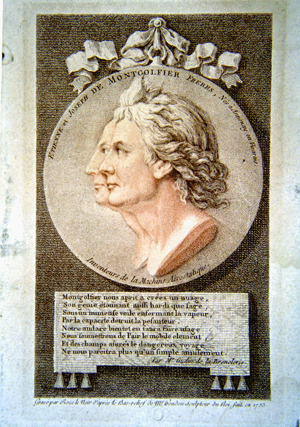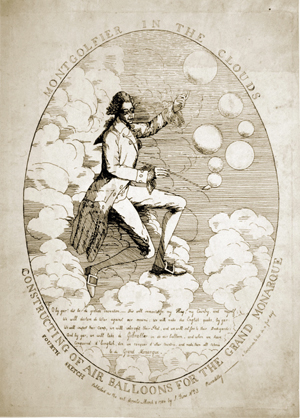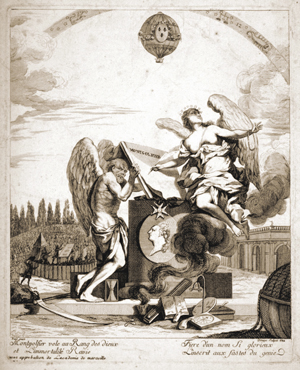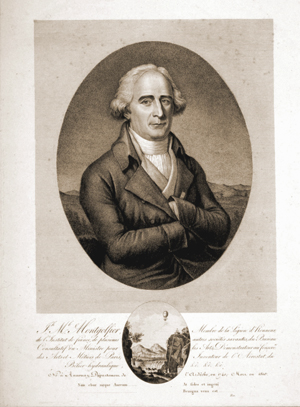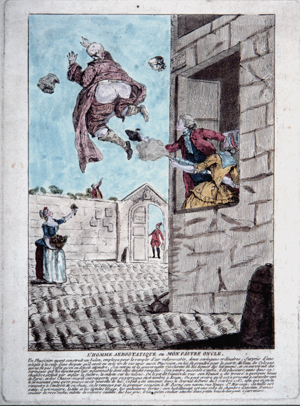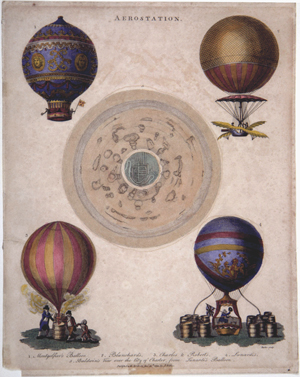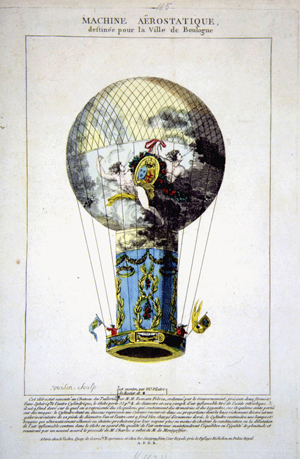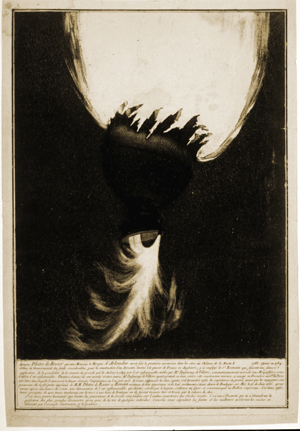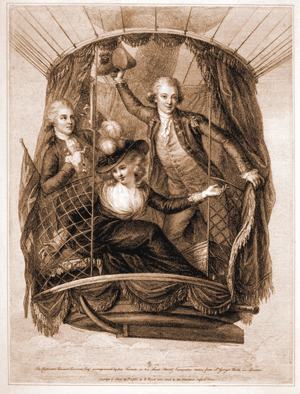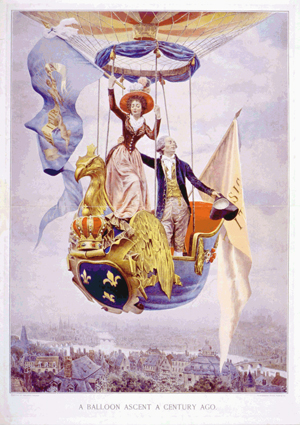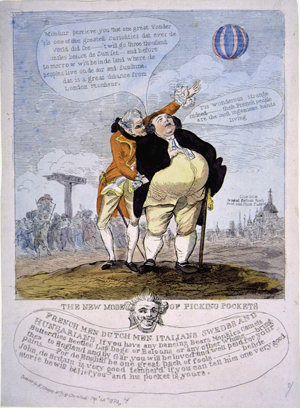This elaborate print, which emphasizes the dash of the aeronauts more than the flight, was published on June 25, 1785, to commemorate a planned flight on June 29. We see that the balloon was to be readied for three people. A memoir written by "Mrs. Sage," the woman depicted in the print, records that five people crowded into the basket when the balloon was inflated; their weight proved too much for the available lift. Three, including Lunardi, left the gondola, and Mrs. Sage and the 25-year-old George Biggin ascended, making Sage "the first English female aerial traveller." Sage mused that Mr. Biggin thought it "no degradation to communicate his observations to a woman, of whose understanding, I am proud to think, he had not a contemptible opinion." While aloft, Biggin made various scientific observations, holding an electrometer with two pith balls at arm's length and "exposing it to a cloud we were then passing . . . he told me his conclusion, which was that the electricity of that cloud was negative.”
(With the glass, one can see the ghost of an eradicated line of text that lies behind the last line of the caption in this print; the eradicated caption appears to include the word Oxford." This print can be found in three states: one with the title: "V. Lunardi Esqr. Mrs. Sage G. Biggin Esqr.," published May 13, 1785, by "Mr. Bovi . . . Oxford Market"; one with the title as above ["The celebrated Vincent Lunardi . . ."]; and one with the title: "The three favorite aerial Travellers."
In the last state, the artist has added a hat and improved the collar and tie of the figure on the left, which is no doubt George Biggin. This change might have resulted from the wealthy Biggin's objection that without these accessories he would appear as the social inferior of Lunardi, although in fact Biggin had provided substantial monetary support to the balloonist. Gibbs-Smith describes Lunardi's dress as "the uniform of the Honourable Artillery Company." The cannon-like device below the basket may be intended to represent and publicize Lunardi's poorly documented experiments with cannons. What seems to be the original drawing for this print is shown in Alvin Josephy, Adventure of Man's Flight, p. 52. This plate reportedly existed and was being used in the twentieth century. The engraver, Francesco Bartolozzi [whose life dates have also been given as 1748—1815], engraved Lunardi's portrait in 1784 [Gimbel XC-10-2A 3261].)

